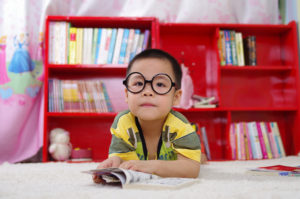Vision Therapy
A quick look at some of the most common vision problems diagnosed and treated at Vision Source Of Bowling Green.
 Vision therapy is a rehabilitative program, designed to treat developmental and/or neurologically induced dysfunctions of the visual system. The American Optometric Association defines vision therapy as a sequence of neurosensory and neuromuscular activities individually prescribed and monitored by a doctor to develop, rehabilitate, and enhance visual skills and processing.
Vision therapy is a rehabilitative program, designed to treat developmental and/or neurologically induced dysfunctions of the visual system. The American Optometric Association defines vision therapy as a sequence of neurosensory and neuromuscular activities individually prescribed and monitored by a doctor to develop, rehabilitate, and enhance visual skills and processing.
There is more to healthy vision than simply having 20/20 acuity, or seeing clearly at a distance. Truly healthy vision means the brain and eyes are working together to produce not only clarity, but to provide an accurate experience of the world around us. Vision has a tremendous impact on the learning process for both children and adults. A whopping 80% of what we perceive, comprehend, and remember depends upon the performance of our visual system. Vision Source Of Bowling Green’s Vision Therapy program is dedicated to helping both children and adults obtain information efficiently, process it accurately, and react appropriately and in a timely manner.
Common Visual Dysfunctions:
- Binocular Dysfunction – Difficulty using both eyes together as a team
- Convergence Insufficiency – An eye teaming error where the eyes tend to drift outward while performing close work.
- Ocular Motor Dysfunction – The inability of the eyes to simultaneously and smoothly track across a page while reading, or to follow moving objects in space
- Amblyopia – “Lazy Eye” Decreased visual acuity that cannot be corrected with glasses or contact lenses.
- Strabismus – “Eye turn” A visual impairment where the two eyes are not able to maintain proper alignment
- Visual Processing Delays/ Cognitive Development– Visual memory, discrimination, spatial organization, visual-motor integration, directionality, visual capture, and visualization
Vision Therapy utilizes strategies designed to retrain the brain’s ability to control eye alignment, eye tracking, focusing ability, and visual processing skills. Visual skills and endurance are developed through the use of specialized computer and optical devices, including therapeutic lenses, prisms, and filters. During the final stages of therapy, the patient’s newly acquired visual skills are reinforced and made automatic through repetition and by integration with motor and cognitive skills.
Common signs and symptoms of Visual Deficiencies include:
- Blurred or double vision while reading
- Skipping or repeating lines while reading
- Reading below expected grade level
- Difficulty copying from the board
- Headaches and eye strain with near work
- Performing below potential in school
- Short attention span for close work